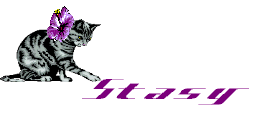


For several years now, Paul Nagle has been accumulating a reputation for lending a distinct earthiness to the space music genre with his approach of utilizing traditional instruments (guitar, bass, and drums) in tandem with contemporary electronic equipment. His music expands this esoteric genre with some dynamic results.

PAUL NAGLE: Lore (CD on Neu Harmony)
This 1999 release features calming electronics enhanced by the presence of flutes, violin, percussion, guitars and bass, producing an atmospheric auralscape tinged with a hint of rhythm and heart.
After diffusely ambient preludes, the four songs on this 65 minute CD delve into more engaging melodies with the introduction of softy snappy drums. Enter a cosmic guitar and the snake-like curl of bass, injecting earthier riffs to the snickering electronic sequences. Frequently, wistful flute strains and astral violin appear, adding a ghostly edge to the mix.
There is a striking passage toward the end of the second song, "Anarchronist", with pulsating E-perc and koto-like guitar. It's moments like this that infuse this music with satisfying effects upon the listener.
The tuneage is quite gripping here, a brilliant fusion of rock instrumentation with a dense and busy electronic tapestry. Once they start going, the melodies are quite insistent and emotional, building to intense pinnacles before they relax back upon themselves for passive conclusions.
Spacey and powerful, without being dronish or overt.

PAUL NAGLE: Red Book (double CD on Neu Harmony)
Nagle continues technical exploration of the boundaries of space music on his "Red Book/Blue Book" release.
Each disc in this double CD features a different take on the globalization of electronic music, allowing particular cultures to deeply influence Nagle's inspiration and the expression of that sonic creativity.
The "Red Book" disc features 61 minutes of music inspired by the moods and airs of Far Eastern cultures; in fact, the original recordings for these tracks were made by Nagle during his May 2000 visit to China.
Contrary to most expectations, this music is mostly electronic (synthesizers, synthetic percussion, samplers, and a bevy of computer apparatus), producing a decidedly fluid edge to Nagle's dynamic sound.
Rapid pulsations explode with melodic force, accompanied by delicate tonal rolls, densely thumping percussives, and cyclic keyboard riffs that evolve with startling swiftness. A touch of choral atmosphere and heavenly sensibilities bestow a pleasing humanity to the electronic music. While basic rhythms unfold, rapid and urgent, fanciful sequences tease the melody to greater intricacy. This variety of riffs intertwine, resulting in a lavish sound base that is further enhanced with sampled snippets of chants and singing children giving the fullness a cultural charm. Piano interludes frequently seep through, generating passages that grant the listener meditative pauses along the entertaining voyage. And quite an exhausting journey it is too, with the compositions exhibiting a complex structure that never relies on endless repetition to create the flow of the energetic music.
Curiously, the "Red Book" disc is not overly steeped in any purely Oriental sound. Instead, the Far Eastern flair is a delicate undercurrent that is an aspect of the whole, not its domineering demeanor. The driving force here is a sonic stimulation that captures the mind with engaging melodies and sinuous tempos. The result is dramatic electronic music cut in a mode that appeals to the sedentary and the hyperactive.
The 53 minutes of electronic music found on the "Blue Book" disc exhibits a more Western personality. This sound is more directly rooted in the Berlin School of electronics (forged by Tangerine Dream and Klaus Schulze in the late Seventies), but Nagle injects a fresh, modern take on these revered influences, striking off into more evocative territory with his uniquely compelling sense of dramatic composition.
Sequenced keyboard riffs are multi-layered to generate lush melodies that are then peppered with diverse enhancements in the form of cosmically bubbling weirdness or surging regions of liquid atmospherics. Although drums (usually digitally generated) appear in the compositions, this type of music generally employs electronic pulsations in place of percussive rhythms, rendering the tempos in flowing patterns. Cycles play a more fundamental role here, with the melodies spiraling and cavorting into a velvet backdrop against which sparkle an assortment of punctuating riffs. Gregarious passive bits lurk in the seamless flow of this music, lulling the listener and preparing them for the next mercurial piece.
While the music of "Red Book" explores a more environmental coexistence and spiritual sound, the "Blue Book" music springs from a dedication to expansive drama and environmental awe. Both CDs will unfurrow your brow with their lively electronic music.

| Entire page © 2001 Matt Howarth. All rights reserved. |
Webpage design by
 |